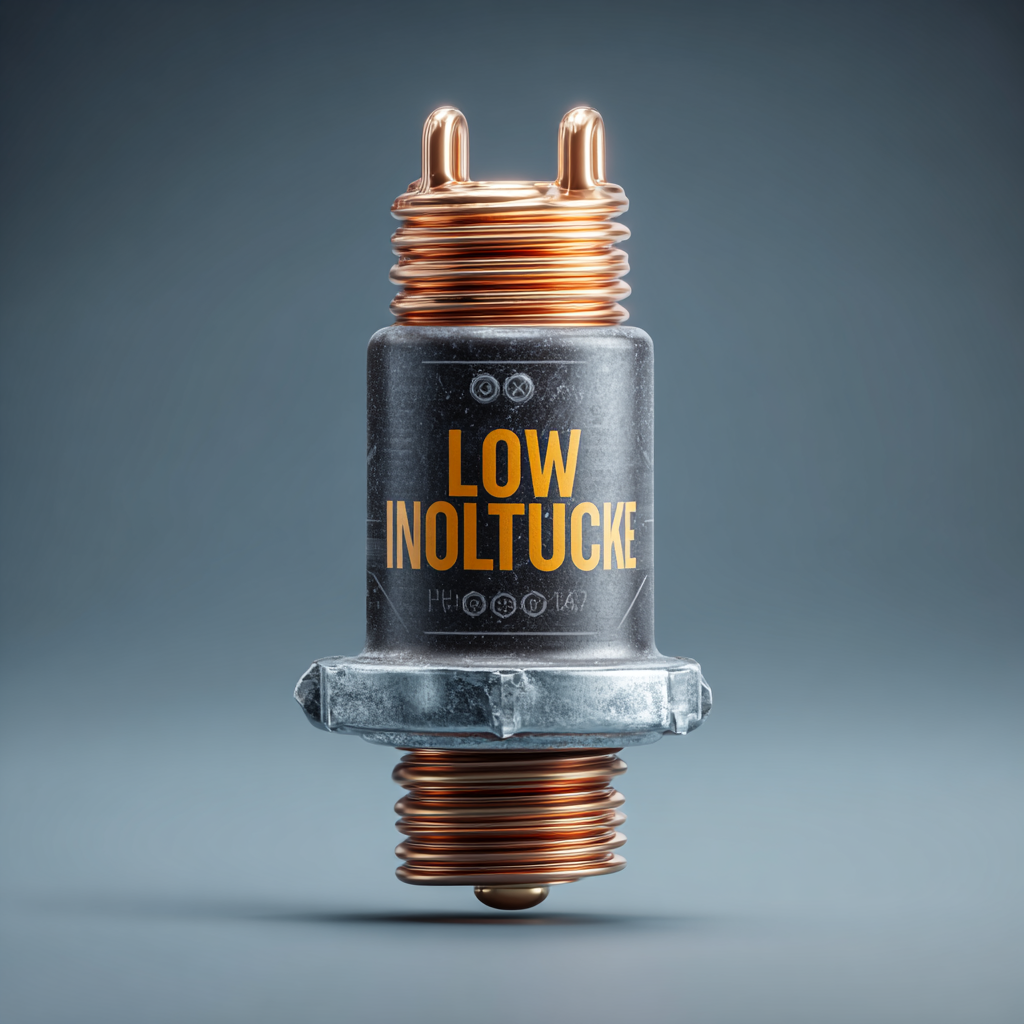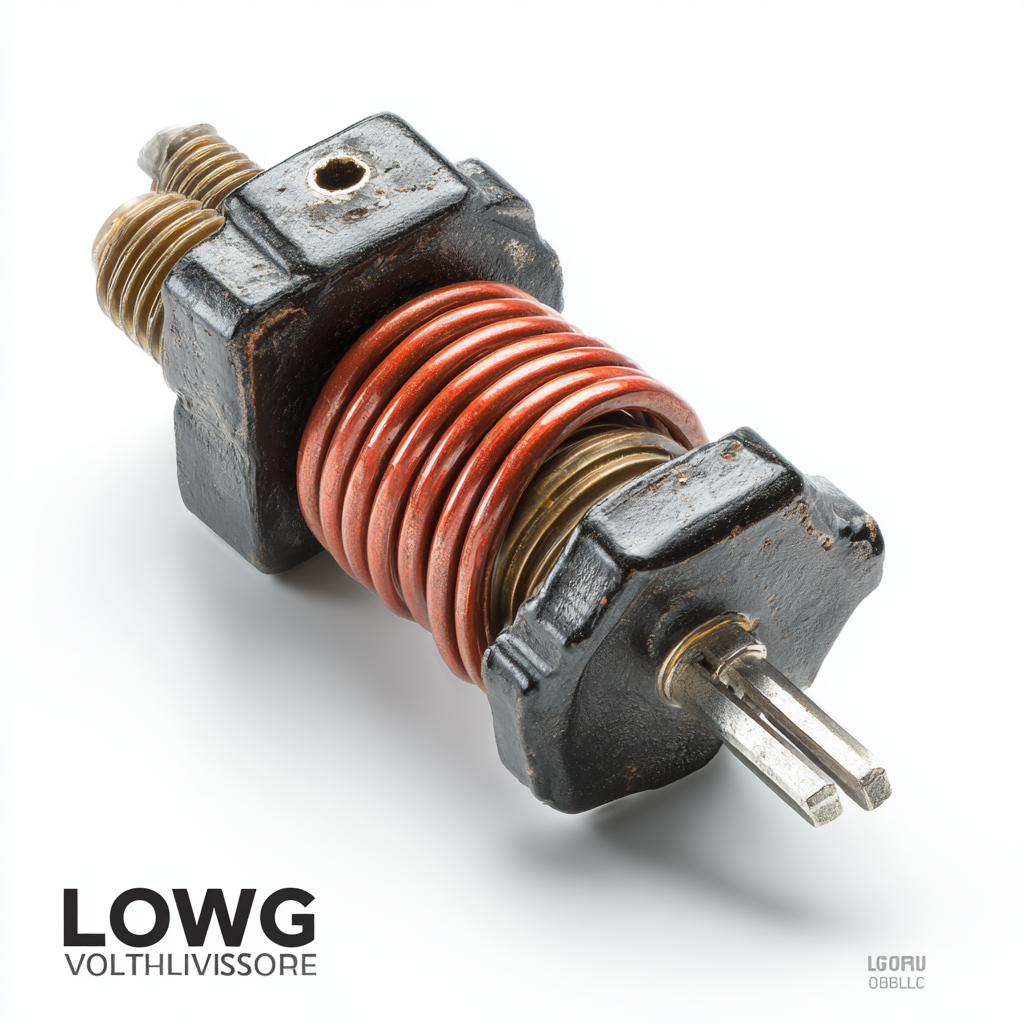Leave Your Message
As the global electrical market continues to evolve, the demand for Low Voltage Insulators is projected to soar, with the market expected to witness a remarkable growth of approximately $20 billion by 2025. This surge can be attributed to the increasing reliance on renewable energy sources and the ongoing modernization of electrical grids.

According to a recent industry report by MarketsandMarkets, the low voltage insulator segment is anticipated to grow at a CAGR of 6.5%, driven by technological advancements and the need for enhanced safety and reliability in electrical systems. In this rapidly expanding sector, sourcing the best Low Voltage Insulator is crucial for businesses seeking to remain competitive and ensure the integrity of their electrical infrastructures.
This blog aims to provide five essential tips to navigate the complexities of the market and identify the most effective solutions for your organization's needs.
As the low voltage insulator market is projected to reach approximately $20 billion by 2025, understanding the key market trends becomes essential for sourcing professionals. According to the latest report from MarketsandMarkets, the growth is primarily driven by the increasing demand for renewable energy projects and the modernization of electrical infrastructure. Regions such as North America and Asia-Pacific are expected to witness significant investments, highlighting the importance of aligning sourcing strategies with regional market dynamics.
Moreover, sustainability is becoming a pivotal focus within the industry. A detailed analysis by Grand View Research indicates that the push for eco-friendly materials is influencing manufacturers to innovate with alternative materials that reduce environmental impact. Sourcing professionals must prioritize suppliers who adhere to sustainable practices, as this not only meets regulatory requirements but also captures the growing consumer preference for green products. By staying informed about these trends, businesses can strategically position themselves to leverage market growth and ensure they source the most effective low voltage insulators for their projects.
In a rapidly evolving market projected to reach $20 billion by 2025, the selection of low voltage insulators has never been more crucial. Evaluating performance standards is essential for identifying insulators that can withstand the demands of modern electrical systems. When assessing these performance benchmarks, factors such as dielectric strength, thermal stability, and mechanical durability must be prioritized. Each of these characteristics plays a vital role in ensuring the longevity and reliability of insulators in a variety of applications.
Furthermore, understanding the competitive landscape can offer insights into which manufacturers are leading the way in innovation and quality. By analyzing industry certifications and third-party testing results, buyers can make informed decisions about which products meet the stringent requirements of safety and efficiency. This thorough evaluation not only aids in sourcing superior insulators but also helps in aligning with the latest industry trends and technologies, ultimately positioning companies to capitalize on the anticipated market growth.
| Tip | Key Considerations | Performance Standards | Market Potential | Trends |
|---|---|---|---|---|
| 1. Understand Application Requirements | Voltage levels, environmental conditions | IEC 60099-4 | High demand in renewable energy sector | Shift toward eco-friendly materials |
| 2. Evaluate Material Quality | Durability, weather resistance | ASTM D149 | Growth in infrastructure spending | Increased focus on resilience |
| 3. Analyze Supplier Reliability | Production capacity, delivery times | ISO 9001 | Consolidation trends among suppliers | Emergence of new technologies |
| 4. Consider Cost Efficiency | Total cost of ownership, maintenance | IEC 60587 | Competitive pricing affecting margins | Focus on lifecycle cost reduction |
| 5. Stay Informed on Industry Trends | Regulatory changes, technological advancements | IEEE C37.100 | Expanding applications in smart grids | Digitalization in electrical infrastructure |
As the utility electric insulators market evolves and expands, companies must adopt cost-effective strategies to secure high-quality low voltage insulators. With the market projected to grow from $4.1 billion in 2024 to an estimated $7.1 billion by 2034, the pressure is on procurement teams to not only ensure reliability in their sourcing choices but to do so while keeping costs in check. The increased demand for low voltage insulators driven by technological advancements necessitates a strategic approach in procurement.

One essential strategy involves leveraging market intelligence to analyze trends and forecasts. Understanding supplier capabilities and market dynamics can lead to better negotiation positions and long-term partnerships. Furthermore, organizations should consider innovative sourcing methods, such as collaborating with local manufacturers or exploring alternative materials that offer equivalent durability at reduced costs. By embracing these proactive measures, businesses can navigate the complexities of the growing market while maintaining a focus on quality and efficiency in their procurement processes.
 Navigating the $20 billion low voltage insulator market in 2025 poses unique challenges for businesses aiming to source quality products. As demand surges, driven by advancements in renewable energy and the growth of smart grid technologies, supply chains must adapt to meet the evolving landscape. Disruptions caused by global events and fluctuating raw material costs highlight the need for agile sourcing strategies. Companies must establish strong relationships with reliable suppliers who can ensure consistent quality and timely delivery, particularly when competing in a fast-paced environment.
Navigating the $20 billion low voltage insulator market in 2025 poses unique challenges for businesses aiming to source quality products. As demand surges, driven by advancements in renewable energy and the growth of smart grid technologies, supply chains must adapt to meet the evolving landscape. Disruptions caused by global events and fluctuating raw material costs highlight the need for agile sourcing strategies. Companies must establish strong relationships with reliable suppliers who can ensure consistent quality and timely delivery, particularly when competing in a fast-paced environment.
Moreover, technological advancements in manufacturing processes are reshaping the insulator sector. Suppliers who embrace innovation can provide enhanced performance and sustainability features, making them more attractive partners. To navigate these challenges effectively, businesses should consider diversifying their supplier base and investing in local sourcing where feasible. This approach not only mitigates risks associated with long-distance logistics but also supports sustainability initiatives and regional economies. By leveraging these strategies, companies can secure the best low voltage insulators while ensuring resilience in their supply chains.
As the demand for low voltage insulators skyrockets amidst a projected $20 billion market growth by 2025, leveraging technology and innovation is paramount to enhance the selection process. One essential tip in this endeavor is to embrace smart grid technologies. These systems not only improve energy efficiency but also help in identifying optimal insulator options that align with sustainable energy goals.
Another crucial aspect is integrating carbon-negative building materials into construction practices. By sourcing low voltage insulators that support or complement these materials, industries can significantly reduce their carbon footprint while optimizing performance. Furthermore, thorough research into energy storage technologies is vital, as these advancements play a critical role in accommodating fluctuating energy demands and integrating renewable sources seamlessly.
Finally, staying informed about the latest recycling methods for electrical cables will aid in making eco-friendly choices during the selection process. By prioritizing products that are designed for recyclability, companies can contribute to a circular economy, reinforcing their commitment to sustainability while sourcing high-quality low voltage insulators.
This chart illustrates the projected growth of the low voltage insulator market from 2021 to 2025. The data indicates a steady increase, reaching $20 billion by 2025, emphasizing the significant expansion in this sector.
